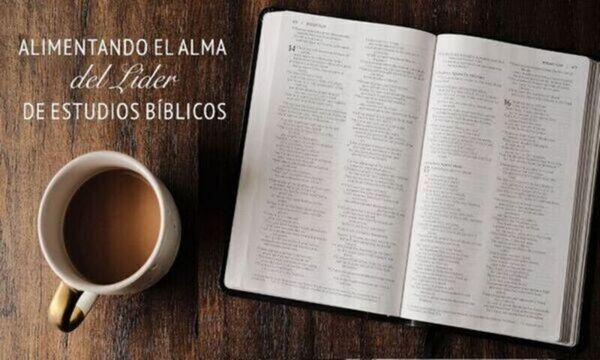We could think of the bodily resurrection of Jesus as, among other things, a form of protest art. вҖңProtest,вҖқ is a blend of the Latin вҖңbeforeвҖқ (pro) and вҖңtestifyвҖқ (testis). Its basic meaning was вҖҳputting truth on display in front of people.вҖҷ Over the centuries (and particularly in the United States) вҖңprotestвҖқ has come to mean more than putting truth on public display. It is doing so in a way that deliberately challenges the status quo, unmasking its injustices, and calling for change, a new and more humanizing way of life. When this is done in a creative, attention-grabbing, often shocking way, what we have is protest art.
Some of the best protest art I have ever seen was in Berlin. Our sleeper train arrived at 3 a.m. so my wife and I had the whole city to ourselves for a couple hours. We walked the trail where the Berlin Wall once stood, through Check Point Charlie, and the claustrophobic grid of concrete columns that form BerlinвҖҷs Holocaust Memorial. We found a dark alley that looked like a Hollywood movie set where hooded superheroes pummel street thugs. I took my wife by the hand and we braved our way through trash and busted furniture. Our little adventure led us into a dystopian dreamworld. There was a rocket ship fuselage propped up on its tail fins. We saw a robot with a propane tank for a torso, scuba gear arms, and mortar shell hands. There was a fence made of brass frames with frayed strings from gutted grand pianos. We saw an armless copper angel, a menorah made of welded bullets, a headless female nude made of chicken-wire and scrap metal, bodies made of concrete with cracks revealing rebar wire bones. Four welded letters, orange with oxidation, stood about ten feet tall to spelled the word вҖңLUST.вҖқ My wife pointed up to a black banner stretched between two buildings. It read: GLOBAL WARNIING | Ausstellung | Alex Rodin
We accidentally discovered the outdoor exhibition of a brilliant artist from Belarus named Alexander Rodin. As the sun rose, we found Rodin himself covered in chalky debris, hammering away at a plaster statue under a tarp hanging off an old Winnebago. During our brief conversation it became clear: I was speaking to a protest artist, and a masterful one at that. RodinвҖҷs art was intended to shock. It turned floodlights on society to reveal something grotesque that we didnвҖҷt see or didnвҖҷt care to see beforeвҖ”women as headless sex objects, the unholy welding of war and religion, the broken promises of technology, and other dehumanizing side effects of life in the 21st century. It is one thing to read about how efficient economic calculus has led to the pruning of music programs from school curriculum. It is another to find yourself fenced in by the stacked skeletons of eviscerated pianos.
Good art does that. It jolts awake something deep inside of us that wants to screamвҖ”вҖңThis is not how it should be!вҖқ In that protest we find our longings intensified for a better world, for what the Bible calls shalom, the way things should be. And if good art doesnвҖҷt leave us longing for shalom it can, at least, put a rock in our shoe. We see or hear or watch something that makes it harder to walk in step with the status quo without feeling uncomfortable, like a grand change is due.
Bob Dylan didnвҖҷt just call for change by saying, вҖңRacism is bad!вҖқ He sang вҖңOxford Town.вҖқ Picasso didnвҖҷt just say, вҖңBooh war!вҖқ He painted вҖңGuernica.вҖқ Dostoyevsky didnвҖҷt just say, вҖңDown with Oppressive Religion!вҖқ He wrote вҖңThe Grand Inquisitor.вҖқ Emma Sulkowicz didnвҖҷt just say, вҖңStop sexual assault!вҖқ She hauled the object of her own trauma on her back through public spaces in her вҖңMattress PerformanceвҖқ entitled вҖңCarry That Weight.вҖқ And so Jesus didnвҖҷt just say, вҖңMy kingdom has come.вҖқ He rose from the dead in a way that jolts us awake to a new and better state-of-being, in PeterвҖҷs words, вҖңto be born again to a living hope through the resurrection of Jesus Christ from the dead, to an inheritance that is imperishable, undefiled, and unfadingвҖҰвҖқ (1 Pet. 1:3-4)
What, then, did Jesus walking out of the tomb protest? Racism, false religion, war, sexual assault? What kind of world was he beckoning us toward? A world of beautiful diversity, global peace, religious justice, and sexual wholeness? Yes, yes, and yes. All of that and more. But to really experience the meaning of what we may call вҖңThe Empty Tomb ProtestвҖқ it helps to view it in the context of the week that led up it:
On Sunday came the protest piece, вҖңMan on Colt.вҖқ It was a bustling day in Jerusalem, the first day of Passover week, the day every year when the Roman Governor made a grand entrance on horseback into Jerusalem, escorted by sword-wielding imperial troops. It was propaganda that said, вҖңHear ye, tens of thousands of Jews: We are Rome. We are glorious, powerful, and rich. We represent Caesar, the son of the gods. You will bow or be made to bow.вҖқ As the Roman overlords gallop into Jerusalem from the West, Jesus rides into the holy city from the East on the back of a borrowed colt. Here was a protest against the self-importance and parody of glory that was CaesarвҖҷs kingdom. Here comes your real Lord not with regal fanfare and implicit death threats, but resolved to die in humiliation for his worst enemies.
The next day, Passover Monday, came вҖңDen of Robbers,вҖқ JesusвҖҷ protest art in the Temple courtyard against the religious establishment. He flipped moneychangerвҖҷs tables and stood among the scattered shekels to touch and heal the exploited. Thursday came the вҖңMeaning of PowerвҖқ exhibition in the upper room. Jesus interrupts a dispute over who will be greatest by brandishing a slaveвҖҷs towel and washing everyoneвҖҷs feet. Later that night came вҖңThis is My Body,вҖқ a multisensory exploration of the meaning of sacrifice and vicarious suffering. Then came Friday, the piГЁce de rГ©sistance against all sin and hell, the public execution of Jesus.
Then comes Easter Sunday. I ask again, what does the bodily resurrection of Jesus protest? Sin and hell? Selfishness? False religious empires? False political empires? The short answer is вҖҳyes.вҖҷ JesusвҖҷ resurrection was his creative subversion of all that is destructive in the universe all at once. It protests what Luke and the New Testament call вҖңthe present age.вҖқ Ancient Jews believed that the drama of the entire universe unfolds in two вҖңolamsвҖқ in Hebrew, two вҖңaionsвҖқ in Greek, two вҖңagesвҖқ in English. There is вҖңthe present ageвҖқвҖ”ha-olam hazehвҖ”the long, dark chapter we live in, full of death, social, political, and satanic mayhem. It is the age of groaning, frustration, toiling, warfare, doom, oppression, tragedy, injustice, and heartbreak (basically, everything that people watch cat bloopers, inhale THC, and swallow antidepressants to forget about).
Then there is ha-olam ha-baвҖ”вҖңthe age to come.вҖқ This was the great hope that prophets wrote poems about, that psalmists sang and danced about, that Jesus told parables about and his followers so eagerly wanted him to establish. вҖңThe age to comeвҖқ is the age of shalom, of peace with God, peace with one another, peace with ourselves, and the rest of creation. It is the age of the worldвҖҷs best wine, food fit for royalty, abundant life, true justice, shimmering beauty, an age when we are most truly and solidly ourselves, where happiness doesnвҖҷt spike and dwindle in seconds, leaving us shaking for a new fix, but crescendos forever. It is the true happy ending that so much great literature, music, painting, choreography, and cinema reaches toward and tries to touch.
So which age are we living in? Sadly, we are living (and languishing) in вҖңthe present age.вҖқ But there is a glitch, a cosmic anomaly, a flash from another aion. A tomb that by all the rules of our age should be occupied is empty. A body that by all laws of our age should be quietly decaying is doing strange thingsвҖ”walking, talking, eating bread and fishвҖ”things that no body that has been through rigor mortis should ever do. вҖңThe age to comeвҖқ has broken into (and broken the laws of) the вҖңthe present age.вҖқ The resurrected Jesus is the glitch in our system of death, decay, and despair, a glorious glitch that will eventually bring the whole depressing system of the present ageВ to a crash. Or to flip the metaphor, the antidote has been injected into a sick and dying cosmos, and is working his way through the whole system putting to death all that puts to death, bringing vigor back to the once terminal universe.
So when we say вҖңHe is risen. He is risen indeed!вҖқ we are not merely stating a remarkable historical fact, not merely expressing our shared doctrine, not merely standing in line with a long tradition of hope. We are doing all of that. But we are doing more. We are joining the great protest chant against all the dehumanization, death, and decay of the present age and heralding, here and now, the subversive breaking in of the glorious age to come in the resurrected Jesus.
"He is risen." And all God's people answer ...
 ИХИХЕцәЭәЭФкҫГҫГФк2023
ИХИХЕцәЭәЭФкҫГҫГФк2023
.jpg)

.jpg)
